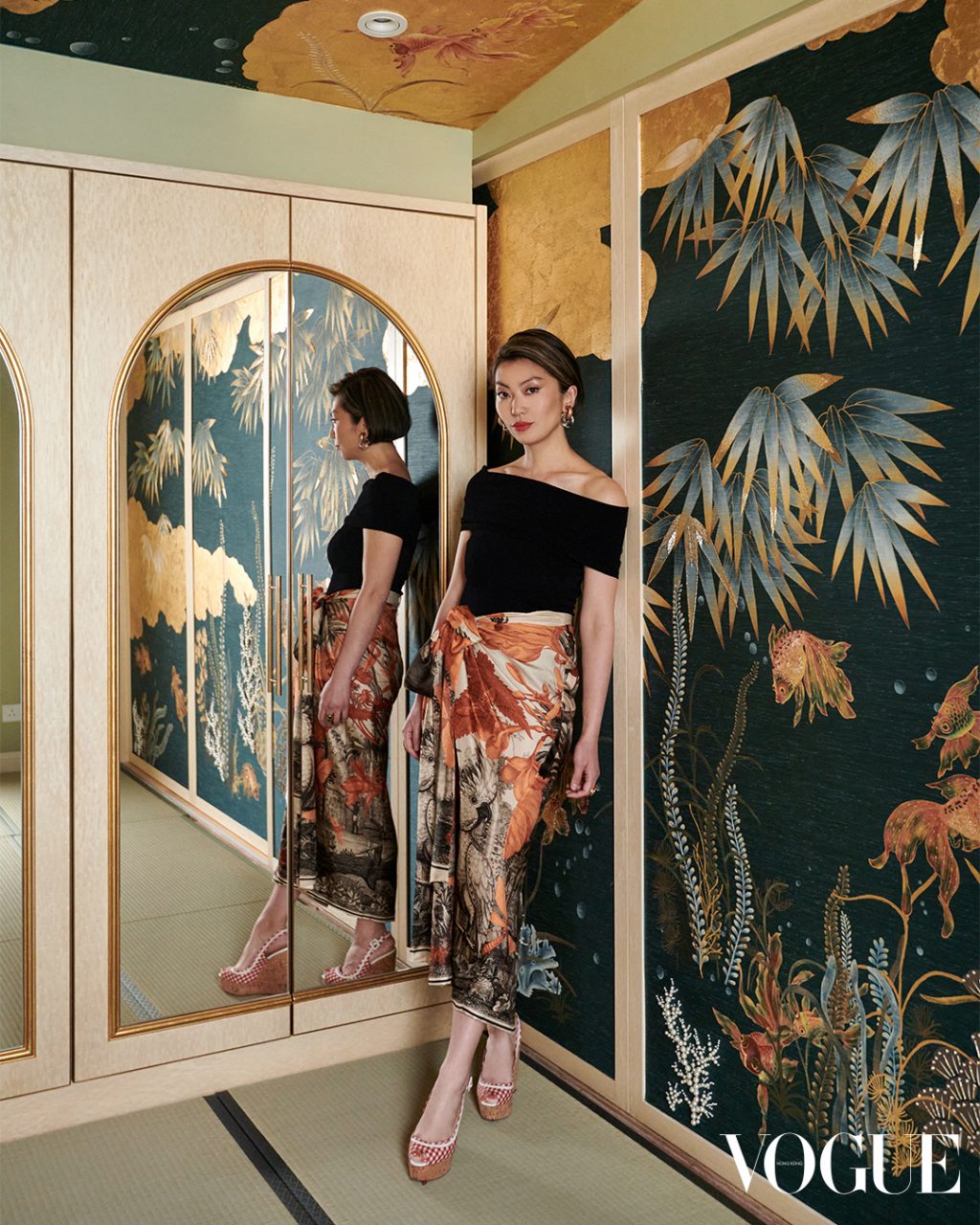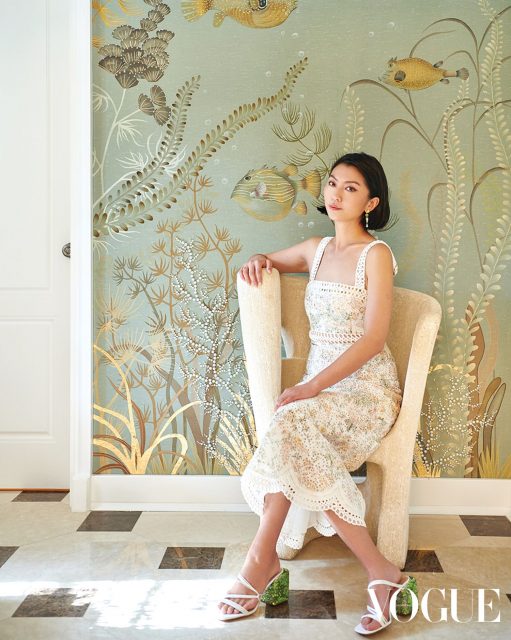Some people fear heights, and others are scared of the dark, but for the founder of luxury home décor brand Lala Curio, it is white walls that she cannot stand. “It’s kind of an issue,” Laura Cheung chuckles inside her newly renovated three-story house by the serene waters of Clearwater Bay. And understandably so, since her brand is renowned for its bespoke hand-painted wallpaper, along with decorative furniture and objects that invigorate forgotten artisanship. While the exteriors are reminiscent of the pristine white houses you can find in Mykonos — where Cheung spent one of her fondest childhood holidays with her father, the interiors are characterised by a ping-pong of colour and texture. As she puts it herself, her home is whimsical, historical and very much Lala Curio.
Over the past two years, Cheung has been managing the renovation of this city escape remotely from Washington, D.C., where she currently resides with her husband and two children—Enso and Maia Wolf. “As a designer, your home is a constant work in progress with no end in sight…until Vogue Hong Kong contacts you for a photoshoot,” Cheung laughs as she lifts the veil on her design process for her new home.
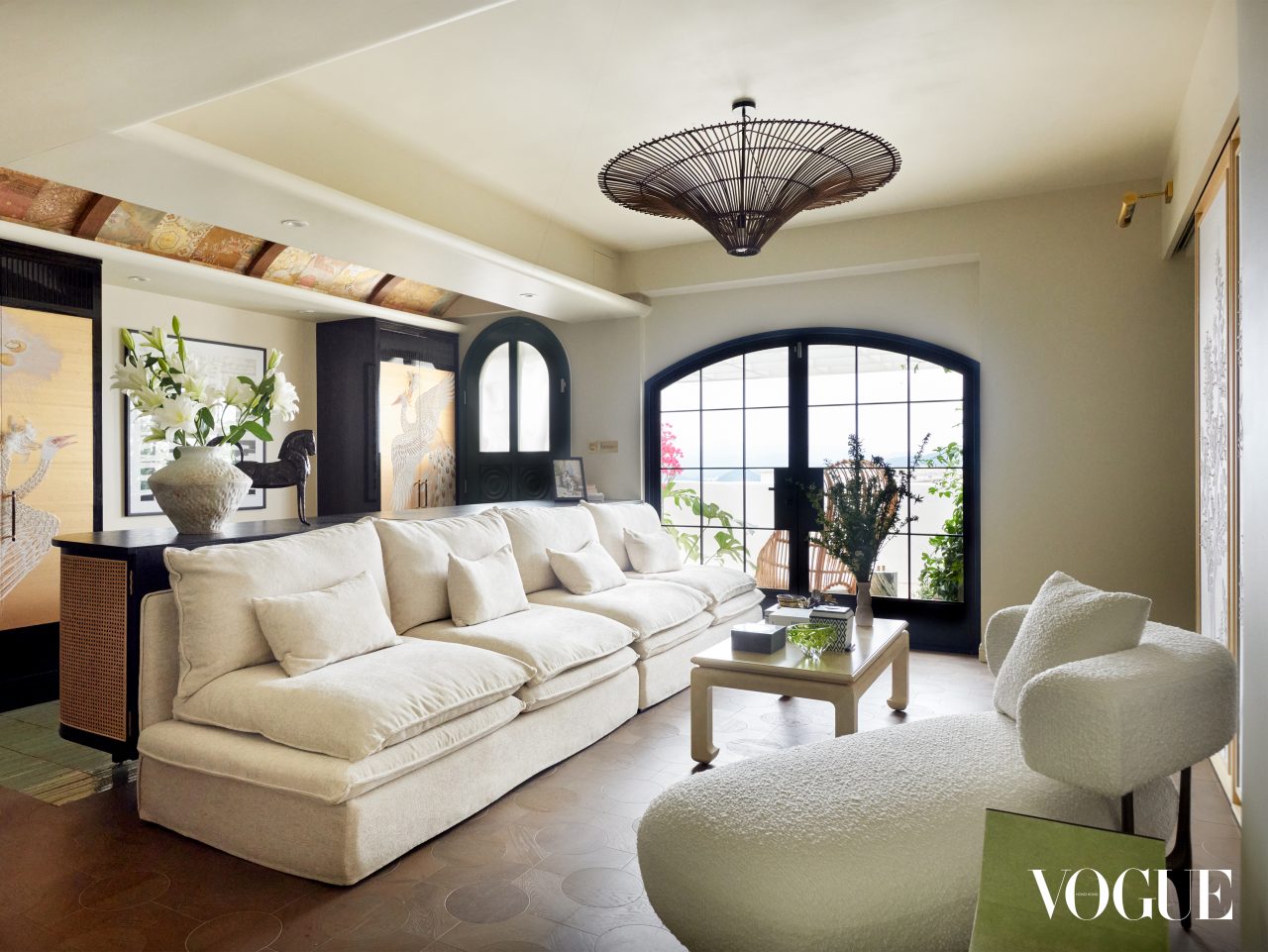
Arched ceiling upholstered in antique Japanese Obis. Wardrobe doors in a pair of peacocks, handpainted and hand-embroidered in beadwork and feathers
Once you open the forest-green front door, rays of gold greet you from above. Since day one, Lala Curio has utilised Japanese obi — the wide sash for kimonos — in their designs, but now, Cheung is applying the material to her ceiling for the first time. On the gold silk sashes, scenes of court life are interwoven with fall leaves, phoenixes and peacocks, creating an intricate visual display. Echoing the ceiling design are two gold-leaf lacquered cabinets lining the entrance of the home, one embroidered with a flying phoenix and the other a regal peacock whose threaded crest shifts in the wind. These decorative pieces take inspiration from the highly ornate Peacock Room that was originally designed in the late 19th century in London and has since been translocated to the Freer Gallery of Art in Washington, D.C.. To Cheung, this was her way of incorporating the most exciting part of Washington, the museum culture, into her oasis in Hong Kong.
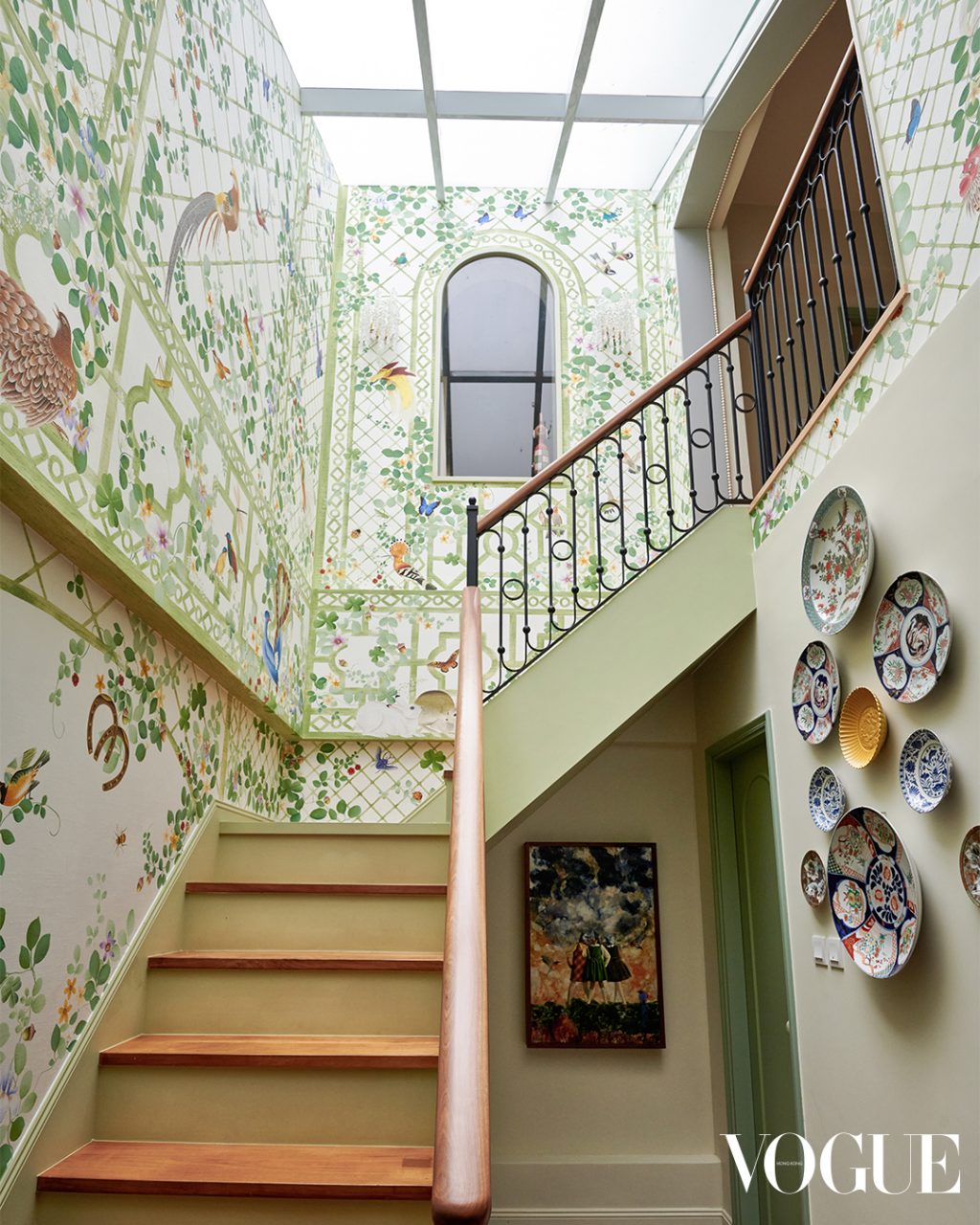
Indoor Winter Garden with skylight in Lucky Charm wallpaper, depicting a gardenscape in trellises interwoven with vines, flora and fauna and lucky totems
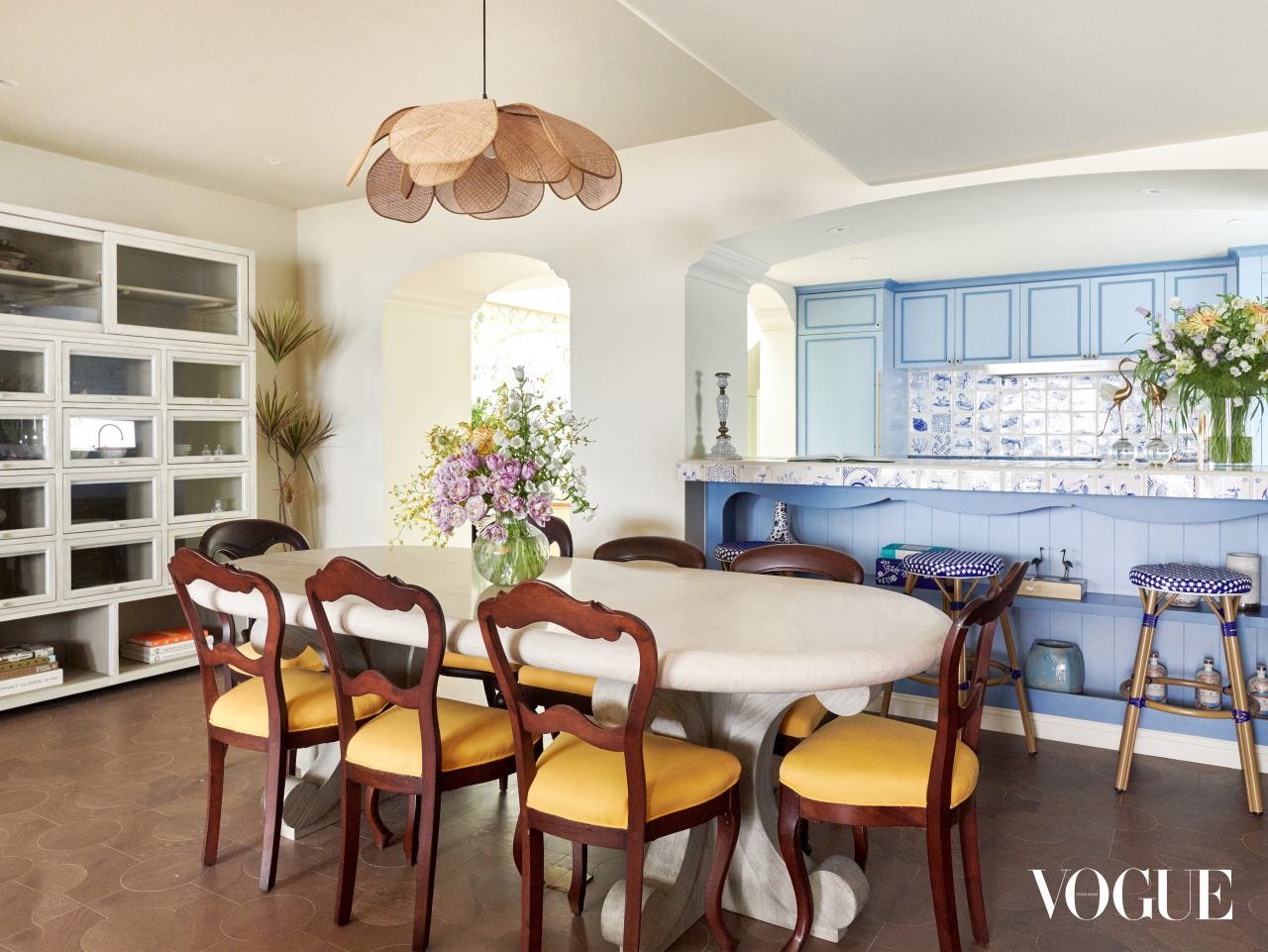
Monolithic limestone dining table with antique Napoleon chairs reupholstered in yellow linen, rustic farmhouse China cabinet showcasing ceramic collections
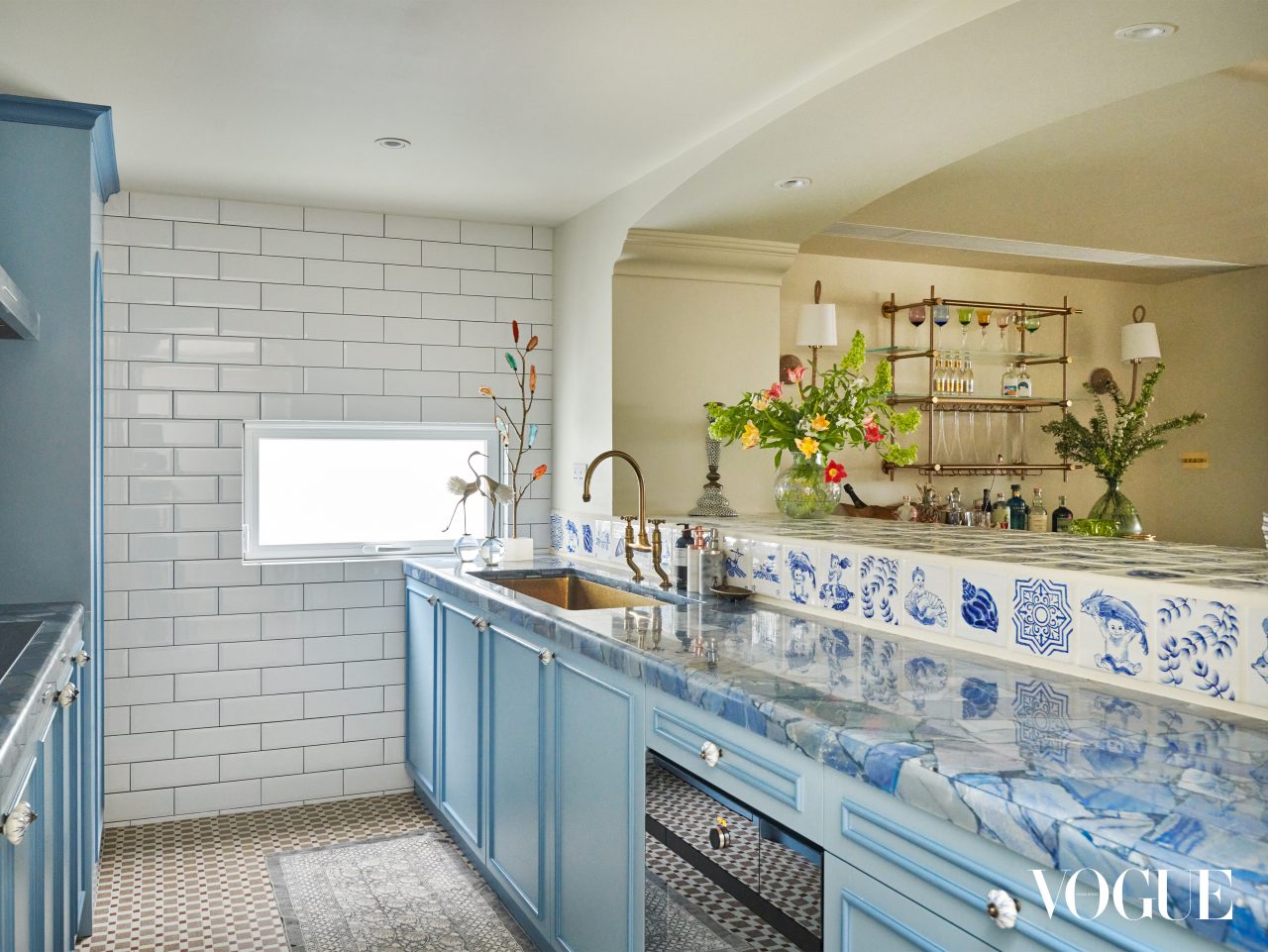
Featuring bespoke blue and white tiles handpainted with seashells and Laura's two kids, lapis lazuli counter top and hand-hammered bronze sink from DeVol
Family lies at the heart of her home’s design. On the patio wall are traditional masks from her father’s extensive African art collection; cloisonné collections from her grandmother are dotted around the entire house; and the snow-themed wallpaper in the living room is a nod to her husband’s love for skiing. In the ocean-themed open-kitchen where cabinets are coloured blue, it is her two children who take centre stage. Adorning the backsplash and counter are custom-made hand-painted blue and white tiles telling the story of Enso and Maia as “underwater world babies”. On close inspection, you would see baby Maia napping on a striped fish. A few tiles away, you will spot baby Enso sitting on a seashell.
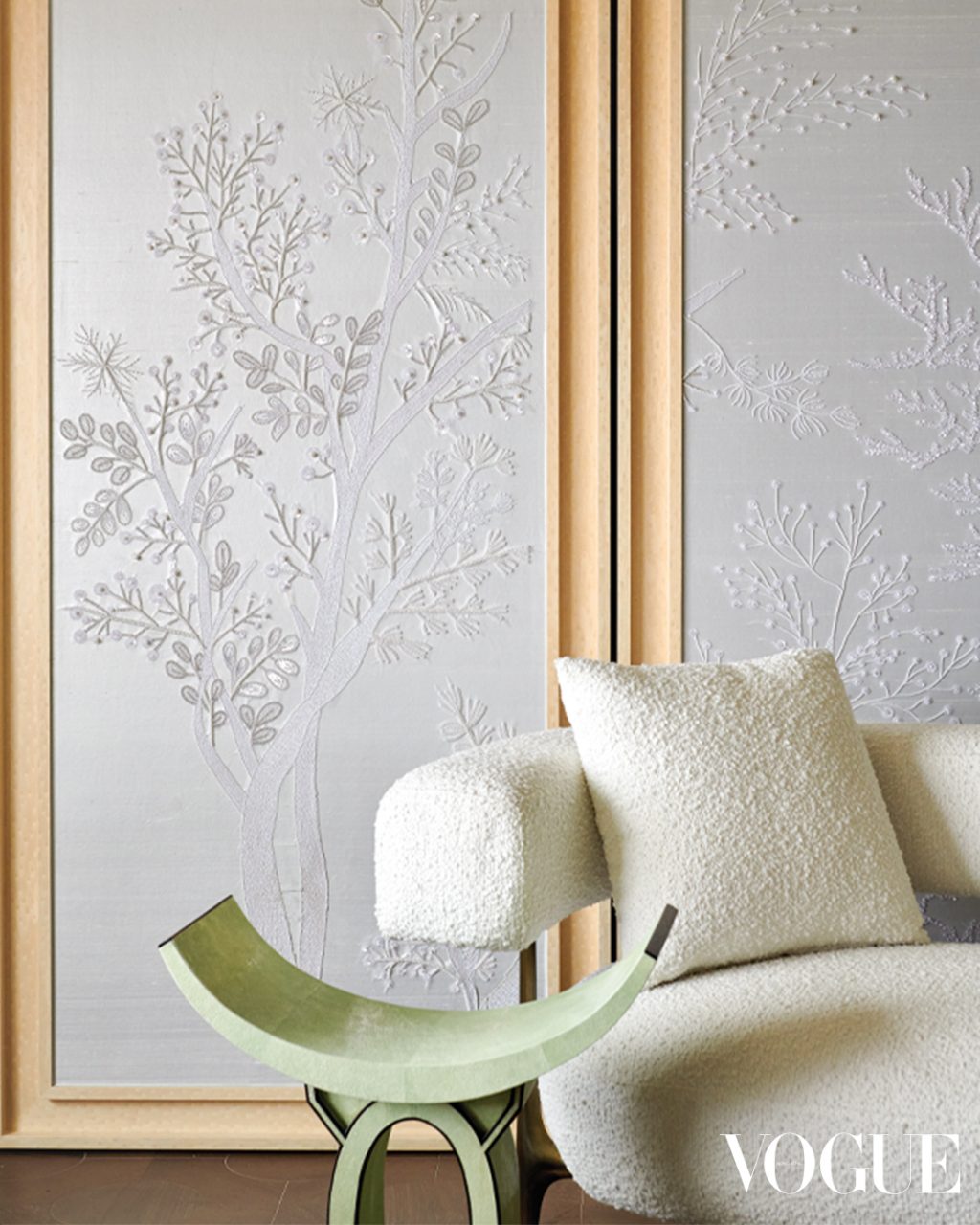
Sliding doors fully hand-embroidered in Snowdrops, sparkles that reminisce ski mountain snowy scenery
Triptych of Siamese fighting fish and their spectacular tails handpainted on gold leaf
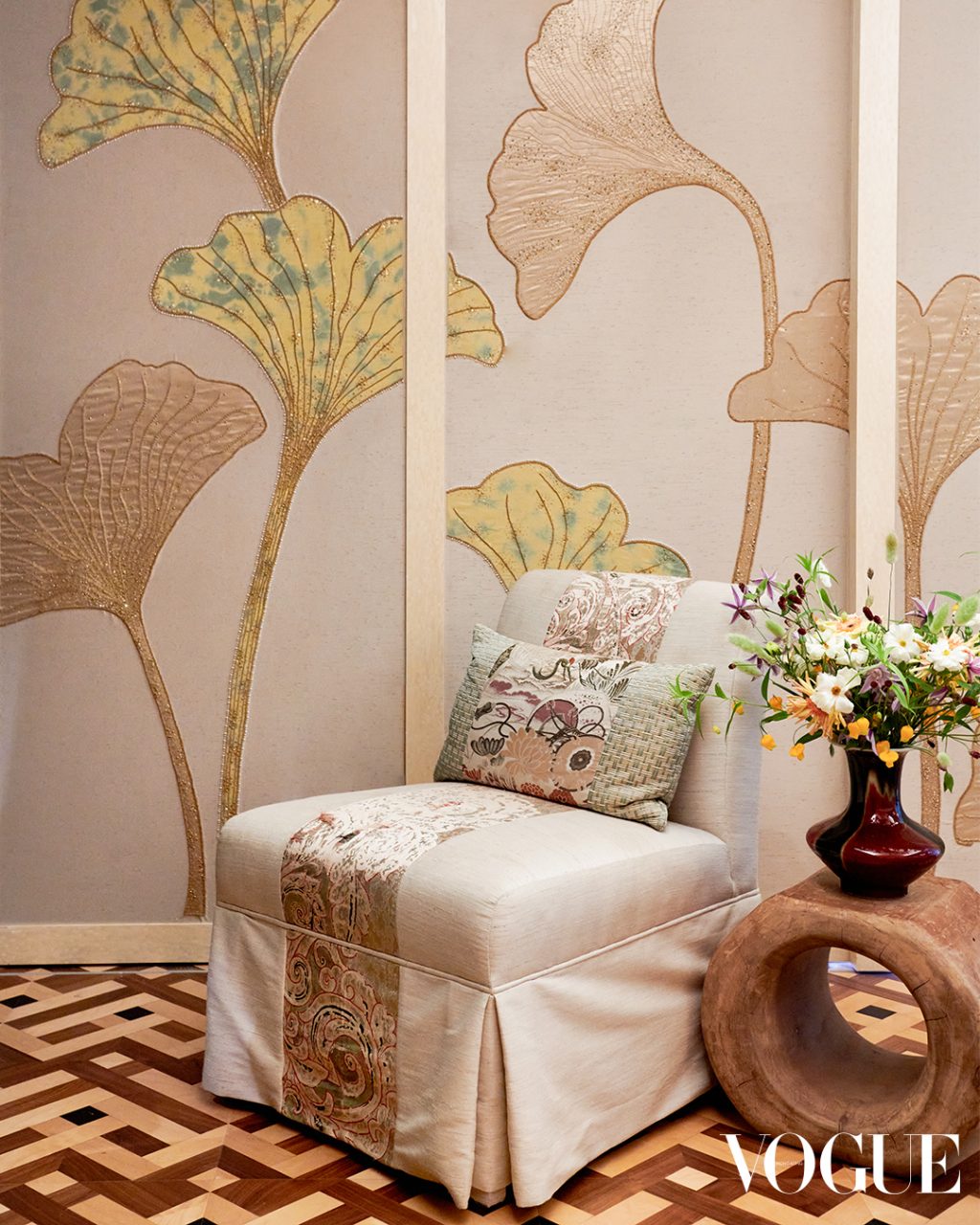
Each Gingko leaf undergoes hundreds of hours of hand-embroidery, the subtle pattern of the leaves are tie-dyed to mimic the seasonal transition from green to yellow
It goes without saying that wallpapers are integral to the house’s design. Hand-embroidered with threads and embellishments, each of the wallpapers also tells its own story. Running up the walls of her staircase is a wallpaper that sings a tale of luck and prosperity. Amongst the romantic French treillage of flora and fauna, beetles and ladybirds crawl among four-leaf clovers, butterflies flutter their wings, a peacock struts its feathers, a pheasant takes a rest, hummingbirds frolic, and horseshoes dangle on the lattice. “It’s really a cross cultural story of good luck, and we are really international family,” Cheung shares, “I grew up feeling very international as well, so we love our work to also speak of that.”
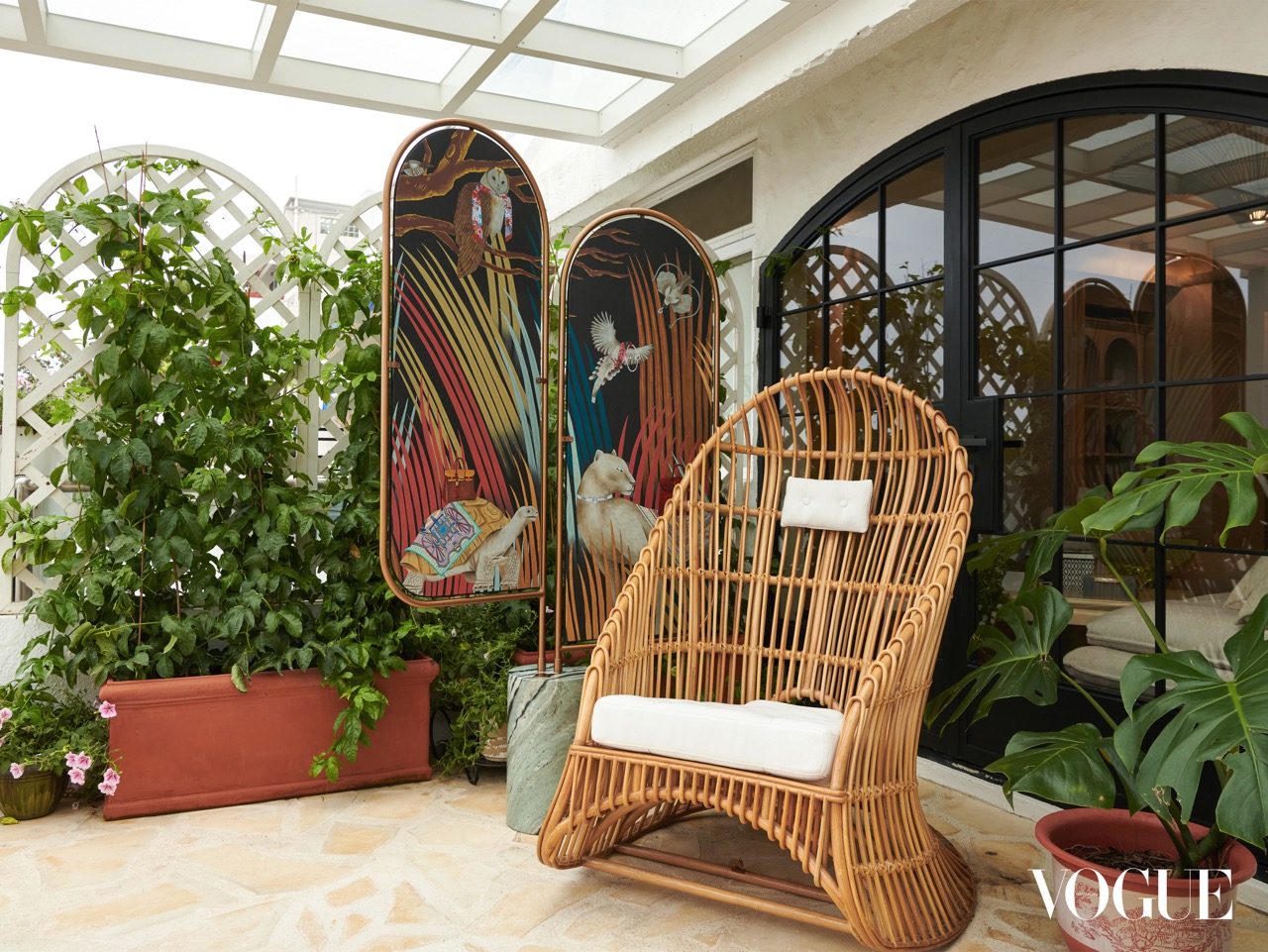
A private nook on the front porch with passion fruit vines, a wicker rocking chair and a decorative screen of the the animal kingdom dressed in Hermes scarves and fighting for Birkins in the Safari — perfect for reading time

Sliding door in cork with handpainted botanicals. Belgian antique farm table with legs in sculptures of village people
The lucky stairs lead up to the second floor, where the family’s two bedrooms lie. Brimming with whimsical wonder is the children’s bedroom, an exquisitely decorated fantastical playground for young Enso and Maia to dream under a golden galaxy. Breathing life into their room is a beautiful “Giving Tree”, named after one of her children’s favourite books. This is a design created in collaboration with Kamini Jivan-Ezralow of Studio Kamini. The Gujarati designer was inspired by the legacy patterns created by an indigenous tribe located along the Gujarat border as well as the jewel-like embellished sarees worn by her mother. The result is a gorgeous wallpaper combining a rich array of embroideries that date back centuries in India. This includes zardozi, which refers to gold embroidery and kuch, which only involves the artisan’s mental counting of threads to work out the composition instead of using an outline. Just like all the other Lala Curio designs, the Thai silk wallpaper was handpainted in Suzhou, China and embroidered in Kolkata, India by artisans who worked in couture houses like Oscar de la Renta, Dior and Valentino. After hundreds of hours of love and labour, ancient artisanship blossoms again in the Wolf children’s room.
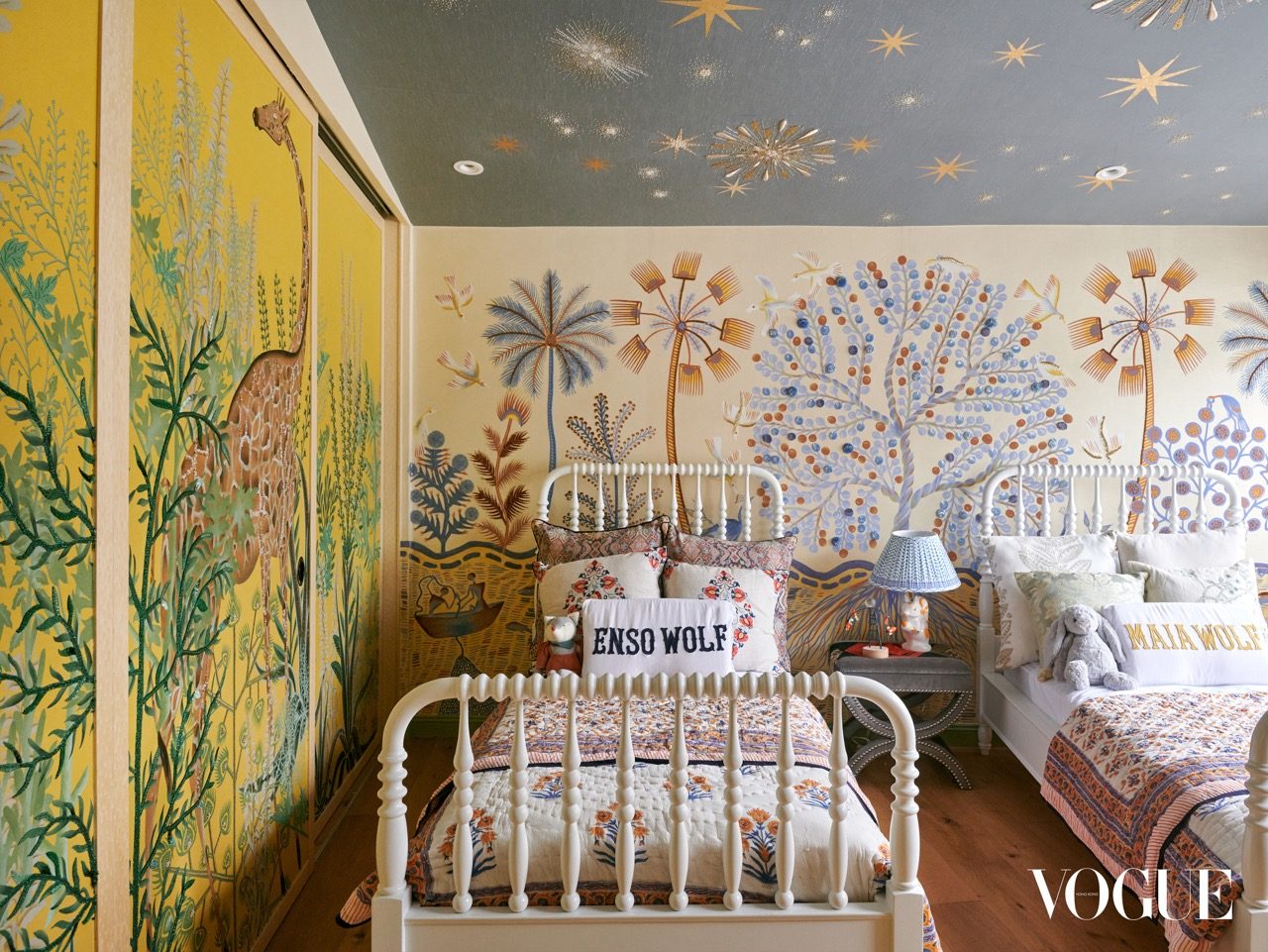
Bespoke for the kids, the ceiling depicts Enso and Maia's horoscope, while the main wall is inspired by their favourite story the Giving Tree
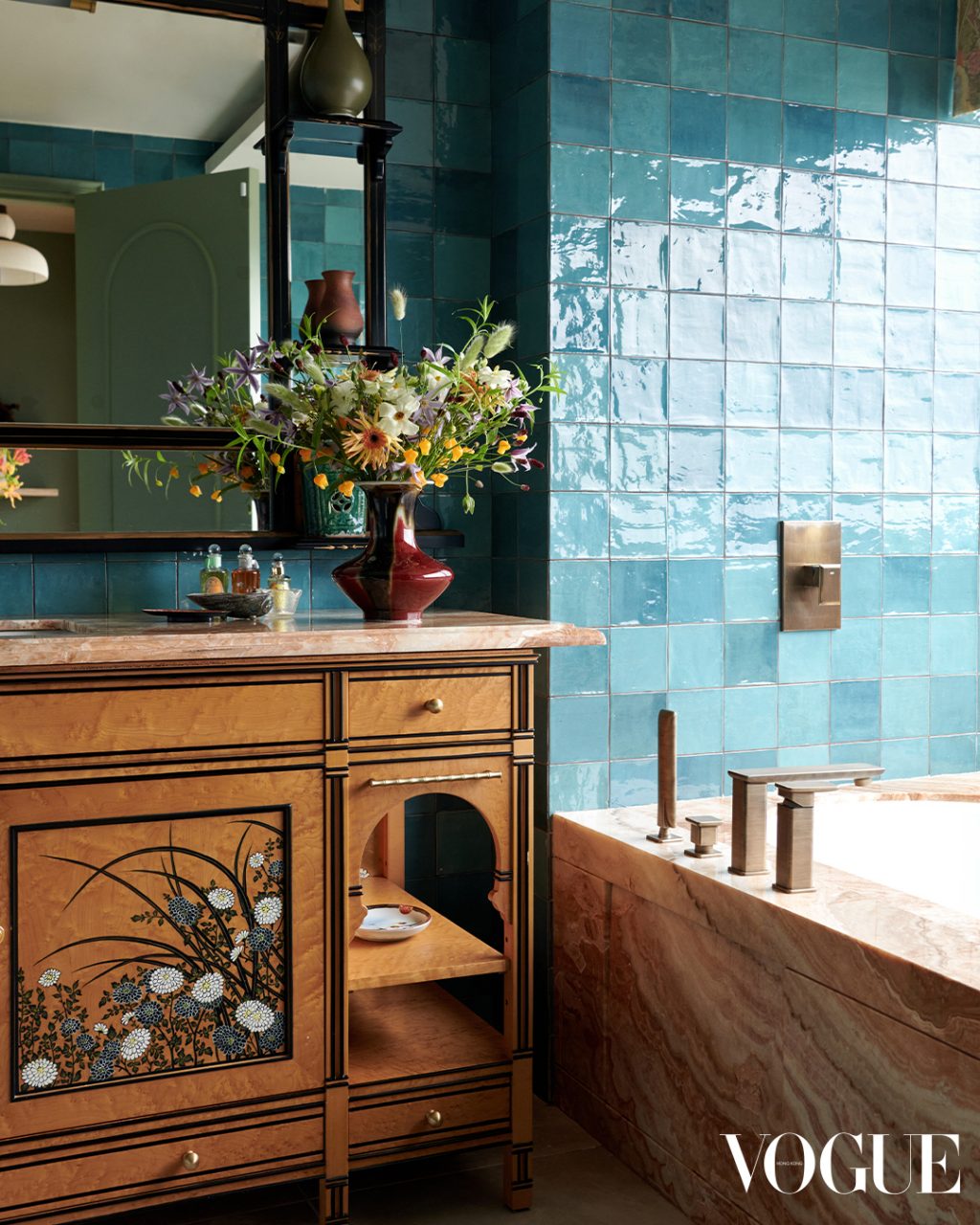
Vanity cabinet inspired by Aesthetic Movement Oriental motifs handpainted on Burl Wood. Handmade tiles reflect the cerulean seas with views from bath tub
Resting on the sliding door next to the children’s beds is a pair of charming giraffes, a design specifically requested by Enso. Sliding it open reveals the dreamy yoga, meditation and play space for the family. “So my husband is American but speaks Japanese,” Cheung shares, “and Japanese culture is important to us, so we wanted to add a bit of Zen spirit and the tatami into the space.” Lining the ceiling and sliding doors are goldfish blowing bubbles and corals embellished in pearls which creates an underwater dreamscape echoing the idea of “goldfish memory”. After all, isn’t forgetting and discovering what meditation and play is all about?
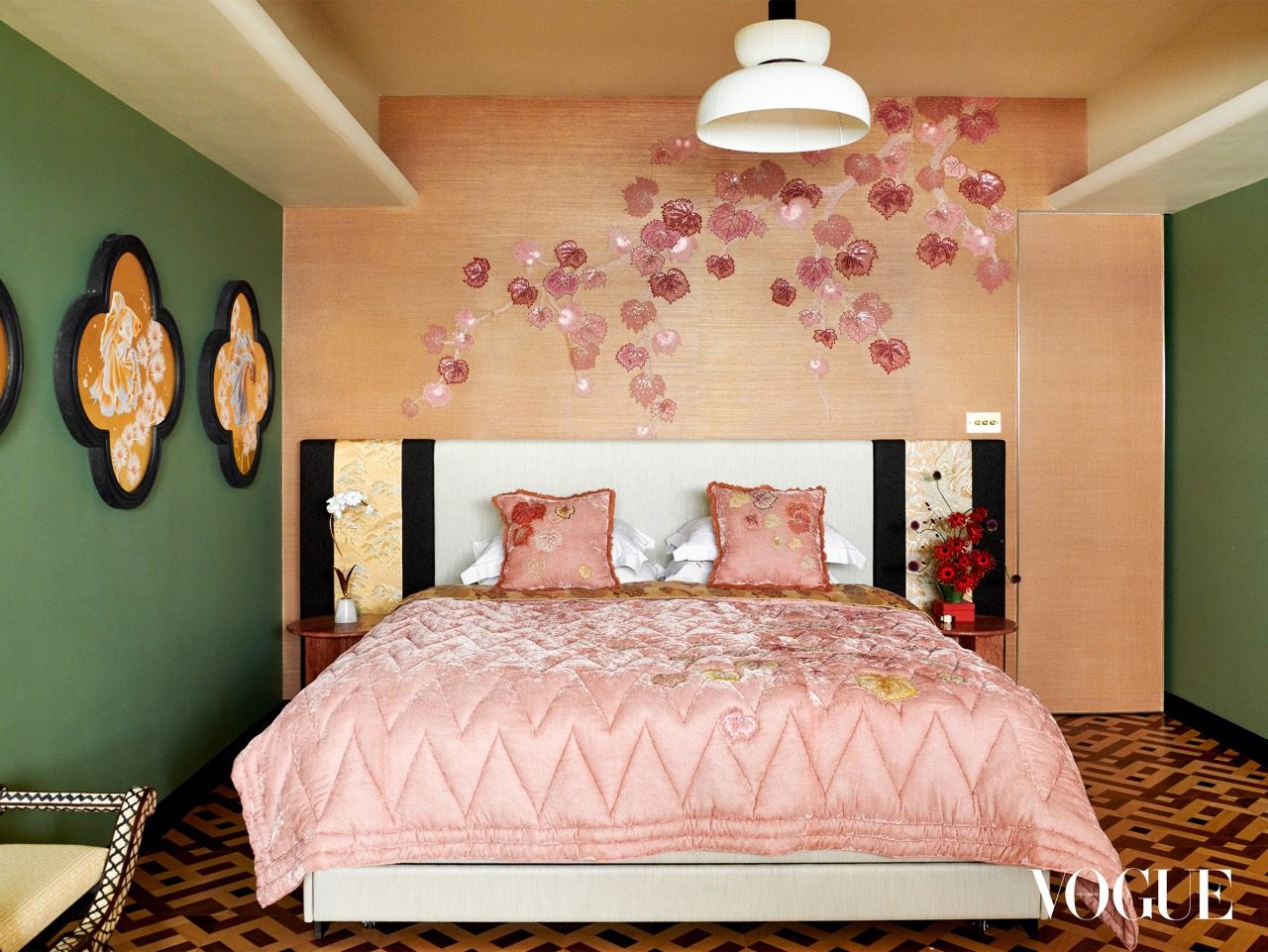
Fall leaves hand-embroidered in tie-dye silks, hand-embroidered in beadwork, carried from walls to bespoke velvet quilt and pillows of the same design
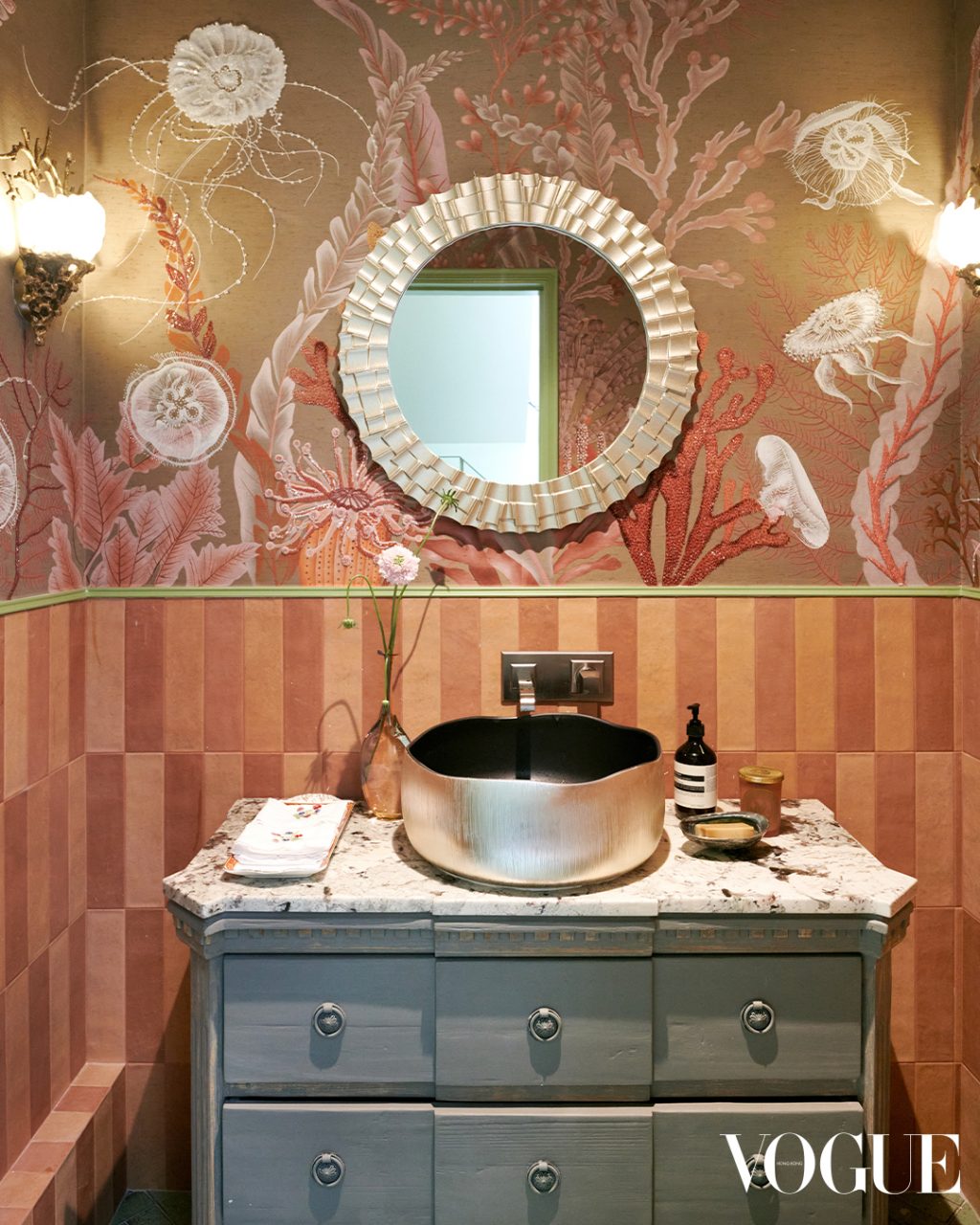
Jelly fish hand-embroidered like couture gowns float in an underwater world of dazzling jewels, bronze shell like sconces illuminate swaying seaweed. A vanity in coral form floats atop a blue French Provincial commode
“What’s important in a home? It has to be inspirational,” Cheung says without hesitation. There is not one spot in her entire house that has not been thoughtfully considered. Looking forward, Cheung is most excited to host friends in this new house—to dine, create memories, and hold playdates for her children.
Editor
Karrie LamCredit
Photography: Natalie Dunn